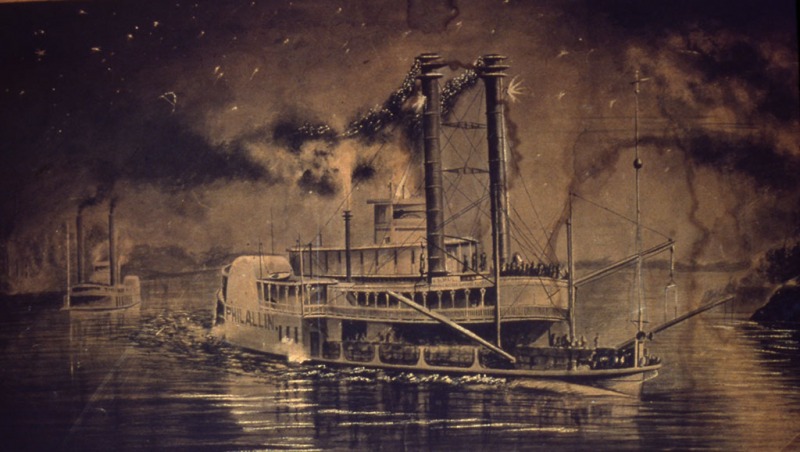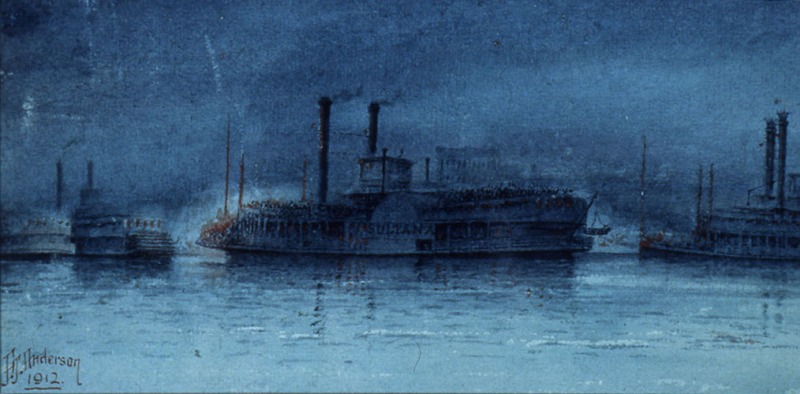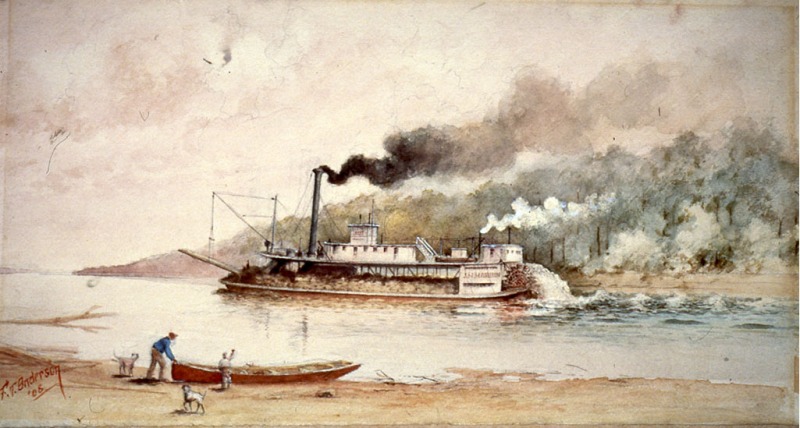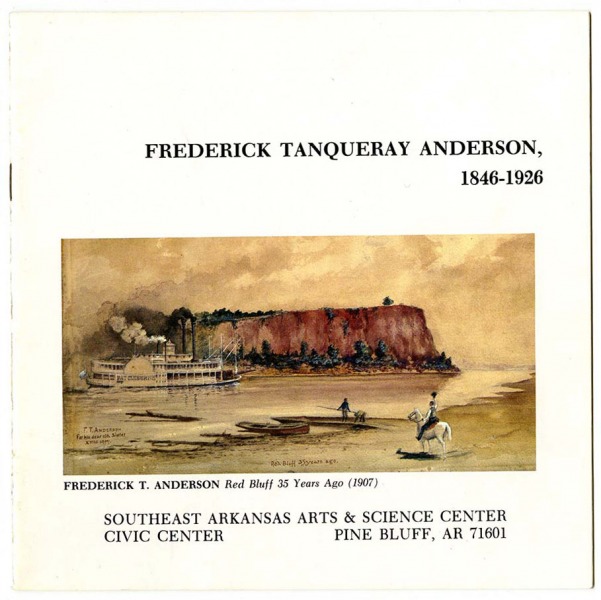Steamboat enthusiasts appear in many guises, including the lay person, the historian, the engineer, the photographer, and the artist. One such artist is Frederick Tanqueray Anderson (1846-1926), an early-twentieth-century Arkansas water colorist categorized as a romantic American Landscape artist, known for his steamboats and landscapes paintings. Anderson’s paintings were inspired from his boyhood memories of traveling down the Mississippi River with his grandfather on steamboats to New Orleans. According to a Commercial Appeal article dated May 20, 1945, many regarded Anderson as the leading river scenes painter of all time.
Anderson was born July 1, 1846, on his grandfather's Arkansas River plantation in Jefferson County, Arkansas. Anderson's grandfather, Antoine Barraque, was one of Arkansas's more prominent settlers as he had served as an officer under Napoleon.
Anderson lived in a variety of places during his youth, including Bolivar Township, Arkansas, New Orleans, Louisiana, and Red Bluff, Arkansas. At the age of twenty-four, Anderson moved to Memphis, Tennessee, and began his career as a bookkeeper in the Cotton Exchange. Shortly after his arrival in Memphis, he showcased his painting talent. The Memphis Daily Appeal published an article dated August 2, 1874, that described an Anderson painting displayed on the wall of the Cotton Exchange entitled Rapidly Ascending the Mississippi. The painting depicts the steamboat Phlallin' charging up the Mississippi River at full speed. The reporter noted that the piece was on of the most beautiful paintings in Memphis.
Anderson married Miss Lula Brucein 1878. Though Anderson continued to work in the cotton industry after his marriage, the desire to further his artistic studies brought him to Europe in 1889, where he studied until 1894. Returning to Memphis after his studies, he contributed pieces to Harper's Weekly, Leslie's and other illustrated magazines of that time.
Unfortunately for Anderson, he painted during a time when Pablo Picasso and other avant-garde artists were gaining acclaim. As a consequence of following his muse - an outdated landscape style reminiscent of mid-nineteenth-century Hudson School painters such as Thomas Cole and Winslow Homer - Anderson failed to gain significant notoriety beyond Arkansas and Tennessee with one exception. President Theodore Roosevelt had traveled to Memphis in 1907 and was presented with one Anderson's paintings, which the president greatly admired. Subsequently, Anderson painted three additional paintings for Roosevelt, including a painting of the steamboat New Orleans, captained by Nicholas Roosevelt in 1811, one of Theodore Roosevelt's ancestors.
Anderson’s works have been exhibited three times:
-
- 1915 at the residence of Mr. and Mrs. Edward Craig, Bentonville, Arkansas
- 1945 at the Brooks Memorial Art Gallery, now the Memphis Brooks Museum of Art, Memphis, Tennessee
- 1983 at the Southeast Arkansas Arts and Science Center, Pine Bluff, Arkansas, now The Arts & Science Center for Southeast Arkansas (ASC)
The Anderson images on this website are courtesy of the ASC.
Anderson died November 14, 1926. He is buried next to his wife in Memphis' Elmwood Cemetery.
Though Many of Anderson's paintings reside in private collections, Anderson enthusiasts can view one of his works entitled the J.N. Harbin' (1908) at the Arts and Science Center of Southeast Arkansas.
Kaye Lundgren, MA, is an archivist assistant for Center for Arkansas History and Culture.




